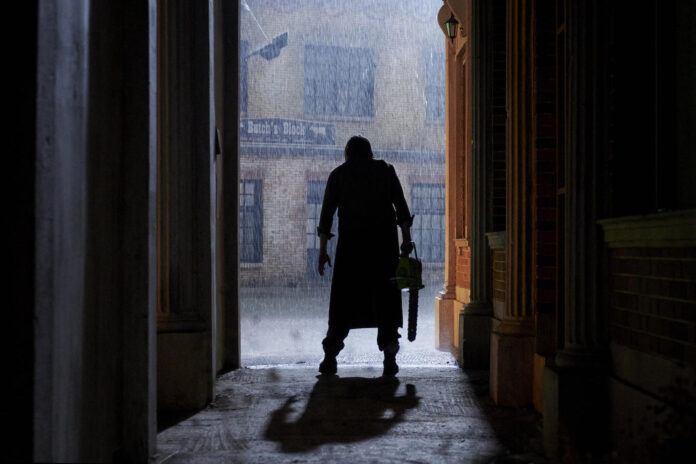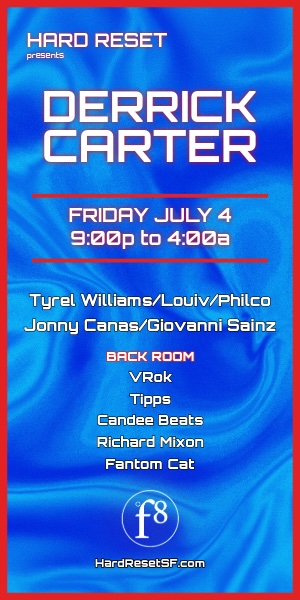It’s been close to half a century since the initial release of the original Texas Chainsaw Massacre, a low-budget, low-profile feature from an unknown filmmaker (Tobe Hooper had previously only directed Eggshells, an interesting hippie experiment hardly anyone saw) that somehow became one of the most successful independent productions ever. For at least a decade it was seldom out of theatrical distribution, perpetually returning to drive-in or grindhouse bills. This despite the critical and censorious revulsion it inspired in many quarters—getting banned in several countries, and originally rated X by the MPAA.
While I’m sure that didn’t make him (or his distributors) happy, that paid testament to Hooper’s skill: People who saw Chainsaw for the first time (myself included, a few years later) found it so terrifying they were convinced it was one of the goriest films ever made. But that’s almost entirely in the viewer’s mind; as vividly as it is suggested, there is almost no graphic violence depicted onscreen.
It’s still an alarmingly effective movie, not because of any relationship to fact (it was very, very loosely inspired by serial killer Ed Gein’s crimes), but because its atmosphere is so frightening and irrational—one immediately senses that the lost-on-a-backroad protagonists have stumbled into company from which no mercy, or sanity, can be expected. There are few things scarier than realizing you are in the hands of forces that cannot be reasoned with. In 1974, this nightmare of berserker nihilism might have seemed a commentary on the Vietnam War and the slow death of ’60s idealism. Forty-eight years later, we might have a different if equally culturally-attuned response: Yep, those Texans, they are indeed armed, dangerous, and craaaaaazy.
While its very title came to personify a particular kind of gruesome screen horror even among people who’ve never seen the original movie, the Chainsaw “brand” has generated one of the most arbitrary franchises in cinema history. Every entry (there have been nine to date) has reinvented the proverbial wheel, most attempting little narrative continuity with the 1974 film, while their tone has swung wildly from formulaic slasher to satirical black comedy to WTF-ness (check out the cosmic-enigma ending of 1995’s The Next Generation, which provided early roles for future stars Matthew McConaughey and Renee Zellwegger). Some have been pretty good, some pretty bad, but none came close to the original’s impact.
That is certainly true for the latest iteration simply called Texas Chainsaw Massacre, now on Netflix. Despite the title, it is not a remake, but a sequel of sorts, the idea being that a fresh batch of meat rolls into Harlow, TX—a virtual ghost town whose demise owes something to notoriety from the murders thereabouts 50 years earlier—only to discover that Leatherface is still alive, and peevish. These victims are Austin hipsters the publicity materials identify as “influencers,” so of course the audience immediately wishes them dead. They’ve arrived to remake Harlow as a “place without the violence and the madness,” one big boutique-y vegan espresso collective, like Burning Man with (even more) money. They have a busload of investors arriving later in the day to realize that dream. But among the very few remaining residents, they discover an old lady (Alice Krige) in denial of her eviction notice. When forcibly extracted, she leaves behind unchaperoned… well, you-know-you, yielding you-know-what.
This is the shortest Massacre ever, clocking in at just 73 minutes before closing credits. That’s not enough time to be dull, but it is plenty of time to get dumb. The pandering to Red State prejudices against bratty, p.c. Gen-X types (we’re meant to take umbrage when one of these “smug self-righteous rich city folks” takes down a Confederate flag) is one thing. The illogic that has original sole survivor Sally (once played by the late Marilyn Burns, now by Olwen Fouere) aging to 70-ish, while Leatherface (Mark Burnham) hasn’t aged at all, is another. The gore is graphic but also ridiculous, with bodies snapping like twigs. There’s a school-shooting flashback for sociopolitical relevance, though things eventually head toward unstoppable-killing-machine silliness nonetheless.
Hired after the original directors were replaced, shot not in Texas but Bulgaria (like the more-interesting last installment, 2017’s Leatherface), David Blue Garcia’s movie is well photograped and a reasonably entertaining guilty pleasure. But it shows every sign of being yet another conflicted hash, undone by “too many cooks” (and rewrites), in the horror genre’s most beleaguered franchise.
There are a number of other noteworthy films at present hailing from the fantastical and/or trashy side of cinema, including a couple choice revivals:
Help us save local journalism!
Every tax-deductible donation helps us grow to cover the issues that mean the most to our community. Become a 48 Hills Hero and support the only daily progressive news source in the Bay Area.
The Cursed
While you can hardly keep tabs on all the vampires and zombies running amuck onscreen in recent years, let us spare a thought for the poor werewolf, neglected erstwhile staple of the horror canon. Currently in theaters (including SF’s Metreon and the Century 20 in Daly City) is this France-shot, English-language costume thriller by Brit director Sean Ellis (Anthropoid). While a mixed bag, it’s probably the most ambitious non-comedic resuscitation of werewolf lore since expensive flop The Wolfman 12 years ago, and if nothing else is very handsomely produced.
In the late 19th century, aristocratic siblings raised on a large estate find their family cursed after all the local gentry orchestrate a brutal purge of Roma people who claim this land as their own. Soon after, resident children start having nightmares about “the scarecrow and the silver teeth.” Then attacks by a mystery wild animal begin claiming lives. A pathologist (Boyd Holbrook) is engaged to solve the crimes, but he soon realizes there is something supernatural going on here.
At nearly two hours, with a WW1 framing device and all, The Cursed (which premiered at Sundance last year as Eight for Silver) could be more compact, and suspenseful. Also, it’s pretty hard not to roll one’s eyes at a film being released in 2022 that in all seriousness hinges on a “vengeful Gypsy’s curse”—somebody raise Maria Ouspenskaya from the dead, and hand that lady a tambourine! Still, taken as a sort of plush occult melodrama, it is enjoyable, and sometimes quite beautiful to look at.
Mommy Dearest: “Hellbender” and “A Banquet”
Family matters are also center-stage in two new films about highly problematic mother-daughter dynamics. In Hellbender, homeschooled, socially isolated teen Izzy (Zelda Adams) chafes at the restrictions placed by her well-meaning mother (Toby Poser). But it turns out mom isn’t just protecting Izzy from the big bad world; she’s protecting the world from Izzy, who has inherited witchy powers she’s barely tapped. When she does begin to flex them, the consequences soon become dire for anyone within reach of her petulant adolescent emotions, including an unfortunate “normal” neighbor girl (Lulu Adams) she’s secretly befriended.
Hellbender, which premieres on streaming platform Shudder this Thurs/24, is the latest from the Adams, a family unit of DIY filmmakers encompassing parents Poser and John Adams, plus daughters Toby and Lulu. They had a breakout on the horror festival circuit in 2019 with The Deeper You Dig, a quietly effective ghost-revenge tale reminiscent of the better early 1970s supernatural dramas. This followup suggests that success has gone to their head, however, as it’s over-indulgent in several ways: Piling on flashy visual gambits and gratuitous musical showcases (yes, the Adamses have a band, too), creating a too-busy, self-congratulatory whole that lacks narrative momentum and suspense. It’s still a cut above the indie-horror average, but a case study in “less would have been more.”
There’s certainly rigor in Ruth Paxton’s UK A Banquet, though even its precise compositions and spare overall aesthetic begin to feel mannered after a while. Newly widowed Holly (Sienna Guillory) is a bit of a control freak, particularly towards her two teenaged daughters—though even she is at a loss when eldest child Betsey (Jessica Alexander) simply stops eating, gripped by some kind of apocalyptic nihilism that leaves her alternately sleeping for days on end and having disturbing “fits.” Is she possessed by a malevolent spirit? Is this strictly a mental health issue, like the one mum apparently once had?
Good luck finding out, since A Banquet (written by the aptly named Justin Bull) feels heavy with metaphor that never really comes into focus. Not exactly a horror film, but rather a psychological nightmare that flirts with fantastical elements, it finally just seems humorless and pretentious—a scaled-down YA version of Melancholia, with the performers doing their best to take seriously an increasingly meaningless progress. IFC Midnight is releasing the feature to theaters and On Demand platforms Fri/18.
Retro Outrageousness: “Drive” and “Village of the Giants”
Considerably lighter in tone are two obscure but still-golden oldies newly back in circulation. Not to be confused with the Nicolas Winding Refn/Ryan Gosling film of the same title from 2011, the 1997 Drive is as garishly excessive as that later film is hyper-minimalist. Mark Dacascos plays some kind of bio-engineered superguy whom the “Red Chinese” and a sinister corporation want to control for their own nefarious purposes. He has other ideas, taking it on the lam with a hostage/comedy sidekick (Kadeem Hardison), pursued by a Kid Rock-looking villain (John Pyper-Ferguson) and others as one location after another gets entirely destroyed.
If the 48 Hours-style buddy comedy elements are less inspired, this Drive nonetheless excels in its long, elaborate, bananas action setpieces. It’s inexplicable that a film this gleefully over-the-top should be so little-known; initially released direct-to-video (with about twenty minutes cut), it was presumably a costly flop that had a chilling effect on the major-league career hopes of director Steve Wang and athletic star Dacascos. (The closest thing the film has to a marquee name is the late Brittany Murphy, playing a somewhat mental motellier named “Deliverance Bodine.”) But with no end of great, if ludicrous, fight choreography and stunt work, it is a guilty pleasure for action fans par excellance. Alamo Drafthouse is showing the full director’s cut version this Wed/23.
Contrastingly cheap ’n’ cheerful is 1965 fantasy Village of the Giants from Bert I. Gordon, who in the prior decade had terrorized humanity with The Amazing Colossal Man and Attack of the Puppet People. Here, a boy science whiz (little Ron Howard, taking a break from “The Andy Griffith Show”) accidentally invents a goo that induces bad-FX giganticism in the family dog and other critters. This effect becomes more dangerous when the stuff is ingested by some mildly delinquent teenagers (led by young Beau Bridges) who’ve rolled into town looking for kicks, then use their newfound size to bully everybody else. The local nice kids (including Tommy Kirk and Johnny Crawford) must save the town from these Frug-gyrating colossi.
A novel entry in the teensploitation genre then dominated by Gidget and Beach Party movies, Village is so dumb it hurts, but therein lies the charm. With a cast encompassing the likes of future “Mickey” MTV star Toni Basil, numerous children of Hollywood celebrities, and music acts like The Beau Brummels (to which oversized geese “dance” at the local “go-go”), it is a movie designed to be mostly ignored while making out with your honey at the drive-in. One can imagine H.G. Wells (whose novel Food of the Gods, later filmed more seriously by Gordon, is credited as inspiration) rising from the grave in horrified protest.
Yet despite teased nudity and violence, the film seems like a last gasp of old-school innocence: Less than a year later, the same audiences would be taking in the far less wholesome antics of Roger Corman’s The Wild Angels, which was considered so scurrilous that the real-life Hell’s Angels sued for defamation. Village of the Giants has just been released to Blu-ray in a 4K restoration by Kino Lorber Studio Classics.






